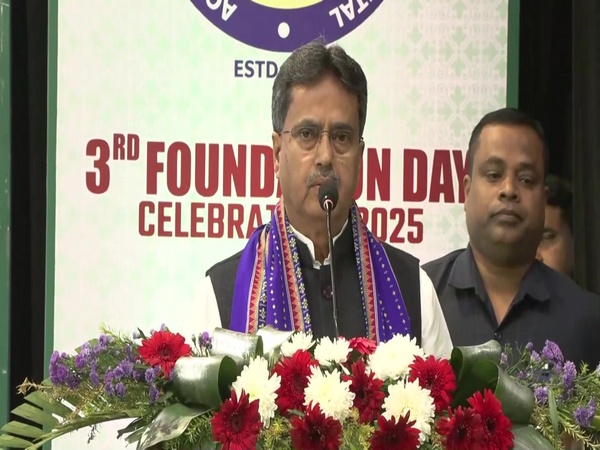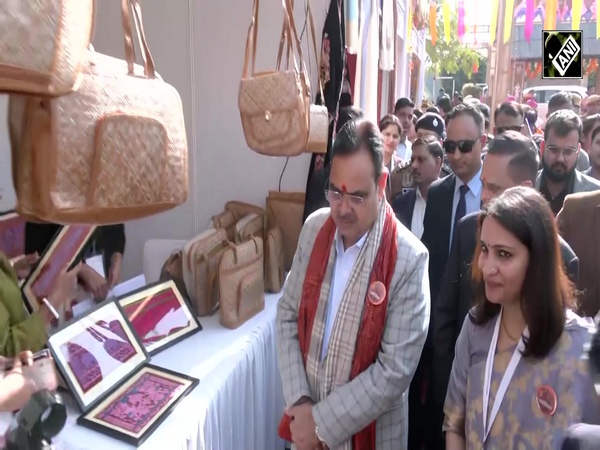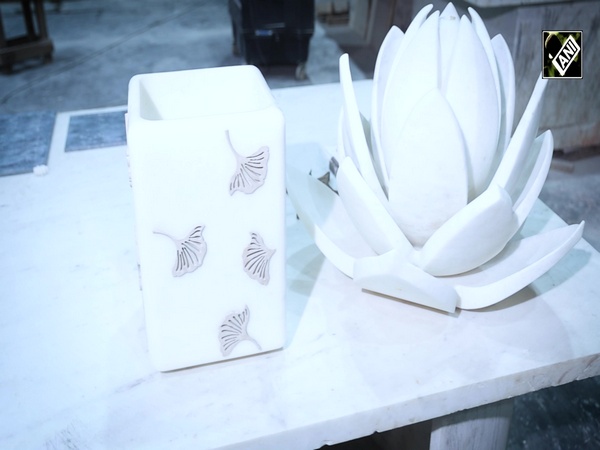Nepali women recycle corn husk into works of art
Jun 15, 2023

By Binod Prasad Adhikari
Kathmandu [Nepal], June 15 : In a rented apartment in the alleyways of the ancient city of Patan, Laxmi Nakarmi along with her staff are busy turning the less regarded corn husk into works of art. This project which had started as a pilot some three decades back now has transformed into a lucrative business with demands surging.
Nakarmi was in her 20s when she read an article in a magazine about using corn husk to make decoratives for Christmas in the United States. Taken up by the idea, Laxmi along with three of her sisters started making corn husk art as a hobby.
"They were making art from the corn husk which was loosely wrapped art depicting their culture, being inspired by that I started it as a hobby and focused on Nepali culture. At first, I used to make small pieces of art and had no thoughts about starting it as a business. Once I read that story in the magazine then the idea to start it with Nepali culture also got pioneered. I always had that thought on my mind about recycling things which we throw out and the magazine drove me towards it," Laxmi Nakarmi told ANI as she sat in her workshop.
Mainly used in North America, the corn husk since then became the inspiration for the four sisters living in the ancient city of Patan in Lalitpur who started transforming the less regarded agricultural by-products into art.
Maize is one of the cash crops of Nepal which suits the typography as well as the weather conditions in the hilly and plain areas of the Himalayan Nation. As per the statistical information from the Ministry of Agriculture and Livestock in the year 2020/21, a total of 2,997,733 metric tons of maize was produced across Nepal which was cultivated in an area covering 979,776-hectare land mass.
Apart from the produce, the remains of the maize are either burnt or left to rot in the dump yard by the farmers. The work of transforming the less regarded agricultural waste has now been taken over the people as the by-products captivate the people in general.
Laxmi recalled the bygone days when she started advertising her products in the market. People had little regard for art after they come to know about the material used to make it.
"Previously, people would react to 'corn husk' and change their facial expressions when we use to exhibit it, some used to ask if it was made from paper and upon knowing it they would still disregard it as an art. Some visitors would also invite us to come and collect corn husk at their locality and I would request them to keep it, promising them to bring it back and use it for the art. I often have gone to their locality and brought them here to use for the art. People previously used to react differently over the corn husk but now it has changed," Laxmi claimed.
Initially, she made dolls only in a small numbers which mainly used to be supplied to handicraft stores around Kathmandu but with time, Laxmi included diversity in her art. The diverse ethnicities across Nepal are now found in her art pieces, whether it is Newari, Khas-Pahadi, Raute (the last remaining nomads of Nepal), Kirat, Sherpa, Jhakri- the dolls have intricate designs in their facial appearance, colour and attire.
The team involved in making these art pieces such as dolls, key rings, souvenir pieces, boxes, and animals all made using corn-husk and bio-degradable itinerates, works throughout the day to complete the orders. Depending on the quantity and the size of dolls, the group of about five women, the majority of them who can't listen or speak, work throughout the day without resting.
Upon arriving at the workshop from the suburban farms and villages, the cornhusks are first submerged in water for extra softness. The husks are then colored in the same way as dying the clothes.
First boiled and then dyed depending on the cultural ethnicity, the tones are kept different depending on the type of doll that is to be made. The corn-husk artists dye it with dark contrast colour for Newars as it is used for the Haku Patasi (Newari traditional wear), for Pahadi-Khas (a hill ethnicity) doll the shades of red and green are used to make the Gunyo Cholo (traditional wear of the Nepali hill community). Upon the completion of the dyeing process, the corn husks are moulded to any shape. The size of an average doll ranges from an inch to almost 36 inches--the average size being four inches.
Females with different abilities working at Laxmi's workshop are being provided with an incentive to work--by employing them and teaching a craft that requires less labor.
It has been years since Sangita Sunuwar has been working with Laxmi Nakarmi in her workshop painting and making corn-husk dolls. The hearing-impaired woman has been fulfilling her personal needs as well as supporting her family.
"It was hard to work until I didn't have any idea about the work but now with time, I have learned a lot and my work efficiency also has increased over time," Sangita said in sign language to ANI about her experience of working at the workshop.
"The nature of work suits us, we don't have to do much labor and it gives us a sense of security. My family is also happy with the work am doing here," Sangita said.
Along with encouraging the use of corn husks in Nepali craftwork and employing women, these dolls are also important for the preservation of Nepali culture. The young generation is unaware of these traditional crafts, and their importance to Nepal.
As generations pass by, doll-making may lose its charm and be considered a dying art. The Sisters' Creation strives for the sustenance of this art, so that it won't ever lose its essence, and can be passed down to further generations.



















